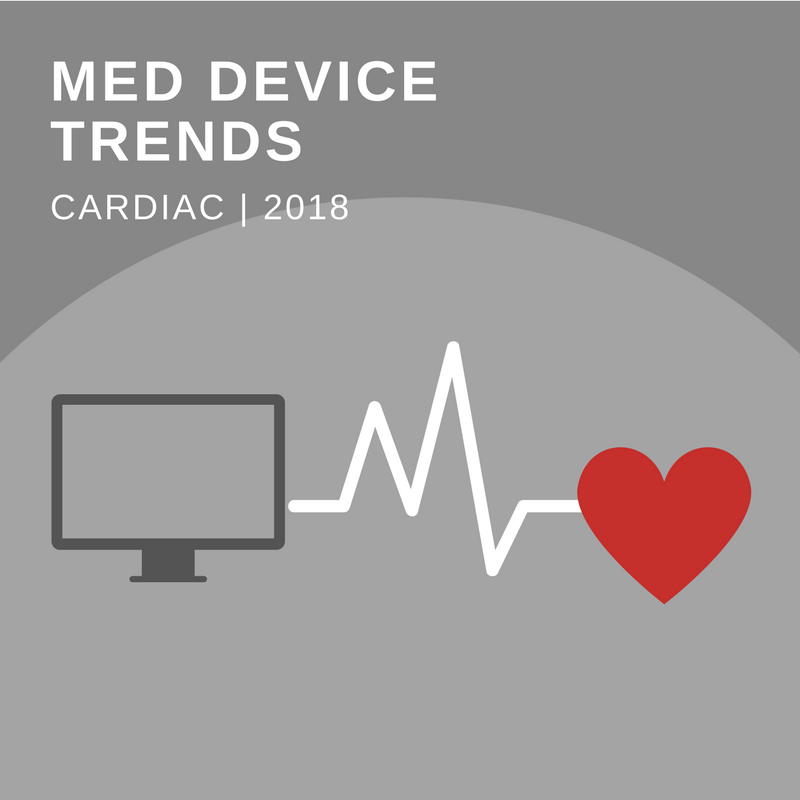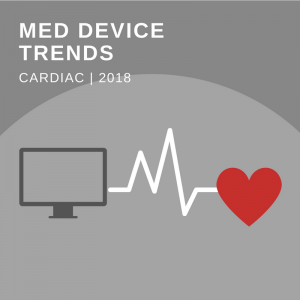When it comes to advances in medical device technology, the cardiology category has consistently led the way. 2018 promises to continue to deliver. These are some of the trends and advances that we’ve noticed.
Stent market once again in flux
Bioresorbable stents were once hailed as the future of coronary stent technology. However, clinical trial data has shown that the current technology is not yet able to generate the kinds of results that had been predicted, and Abbott has already stopped offering their Absorb brand stent. Though market forecasters still see a long-term future for bioresorbable stent technology, in 2018 we expect to see them fall out of favor as interventional cardiologists stick with long-standing drug eluting (DES) stents.
If there’s one thing we know about the stent space, though, is not to count a technology out too early. We predict that the next generation of bioresorbable stents will be far more advanced and effective than the first generation. The proof will be in the data. Right now, we have second generation DES being compared to first generation bioresorbable stents, but now that the problem of late stent thrombosis has been uncovered, engineers and researchers will be working on a way to resolve the issue.
A new age for ICD therapy
CRT-Ds dominate as the device of choice in ICD therapy. Though there has been a complex clinical discussion around the risks and benefits of CRT-D vs. CRT-P for different groups of patients, one assumption, that longer battery life will help lead to better outcomes, has driven technological development in the field for decades. Now, however, the idea that a battery is necessary at all may become obsolete. 2017 saw the first animal study of a batteryless and leadless pacemaker. This novel device is powered wirelessly using radio frequency radiation from an external power source. With this technology still in its infancy, we can expect to see traditional battery-powered pacemakers continuing to be implanted in 2018, but we predict that a race is already underway to be the first to market with this game-changing technology.
Robots invade the cath lab
We have talked a lot about the amazing feats of mini-technology for use inside the body, but we would be remiss if we did not talk about the exciting technological breakthroughs in cardiac technology outside the body. Robotic-assisted PCI is beginning to catch on. Robotic systems have been available in the marketplace since 2012, but adoption has been slow due to lack of clinical data and a high price tag in a highly cost-conscious environment. The data is now showing that it is feasible to successfully treat patients using the robotic method, which means two things: first, we will begin to see a new era of safety for interventional radiologists. It’s no secret that these doctors take the highest radiation hit of any specialty, and studies have shown it takes a toll on their health, with higher cancer rates and damage to their eyes and hearts. Second, we will begin to see rural hospitals in both the developed and developing world be able to offer emergency cardiac care through the use of telemedicine. Though the remote robotic-assisted human case hasn’t happened yet, it is on the horizon, and it could open up access to quality coronary interventions to more areas than ever before, helping to reduce time to treatment and save lives.
The world of medical device marketing is constantly changing, and frankly that’s one of the reasons why we love it. With so many exciting developments on the horizon, it’s more important than ever to know your brand’s strategic quotient. Click below to find out more.

REFERENCES:
Fornell D. Abbott Will End Sales of Absorb Bioresorbable Stent. Diagnostic and Interventional Cardiology. September 8, 2017. Accessed: https://www.dicardiology.com/article/abbott-will-end-sales-absorb-bioresorbable-stent
Lindvall C, Chatterjee, NA, Chang Y, Chernak B, Jackson V, Singh JP, Metlay JP. National Trends in the Utilization of Cardiac Resynchronization Therapy with or without Implantable-Cardioverter Defibrillator. Circulation. January 19, 2016; 133(3): 273-281. Accessed: https://www.ncbi.nlm.nih.gov/pmc/articles/PMC5259807/
Maor E, Eleid MF, Gulati R, Lerman A, Sandhu GS. Current and future use of robotic devices to perform percutaneous coronary interventions: a review. Journal of the American Heart Association. 2017;6:e006239. DOI: https://doi.org/10.1161/JAHA.117.006239
Nauffal V, Zhang Y, Tanawuttiwat T, et al. Clinical decision tool for CRT-P vs. CRT-D implantation: Findings from PROSE-ICD. PLoS One. April 7, 2017; 12(4): e0175205. Accessed: https://www.ncbi.nlm.nih.gov/pmc/articles/PMC5384669/
Williams M. Texas team debuts battery-less pacemaker [Press Release]. Rice University News & Media. June 5, 2017. Accessed: http://news.rice.edu/2017/06/05/texas-team-debuts-battery-less-pacemaker-2/






